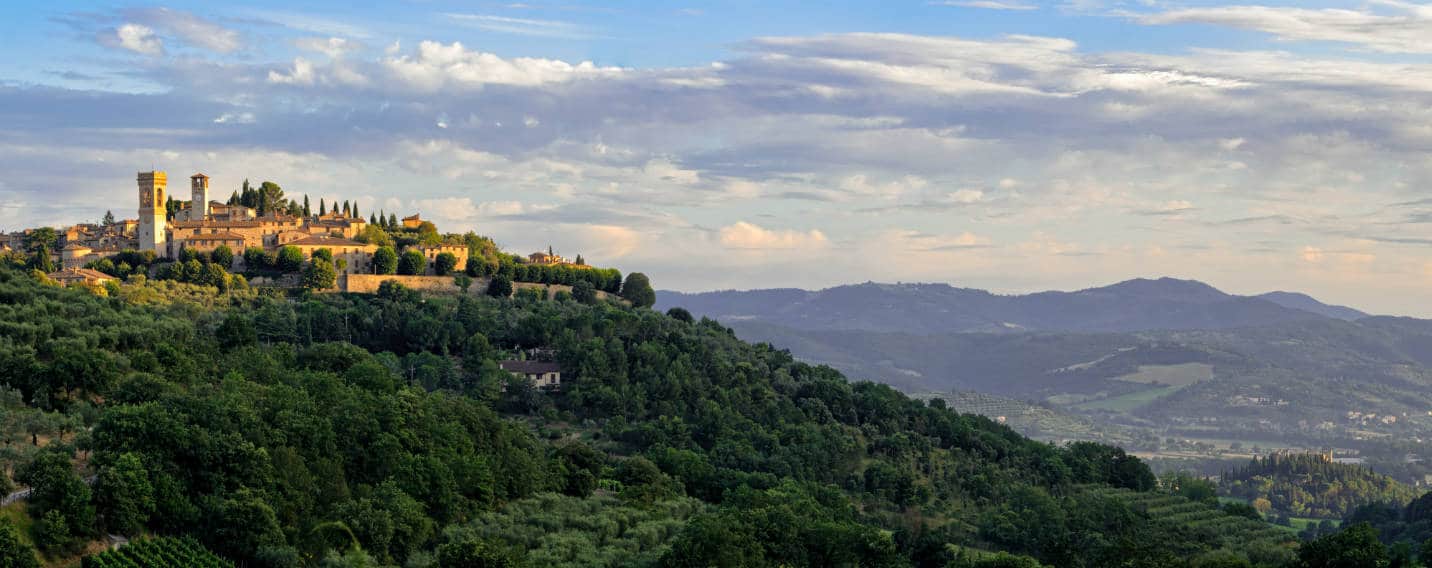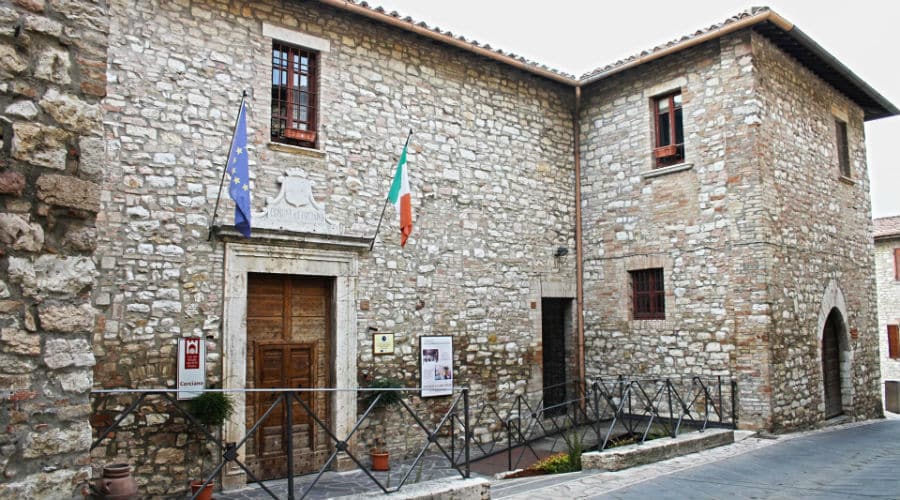The famous warlord Ascanio della Corgna, expert in military fortifications, was a friend of Galeazzo Alessi, its estimated master of architecture. When they returned in Perugia in 1561 (after having realized many works, especially in Genoa and Milan) the marquis, in agreement with the Brother Cardinal, nephews of Pope Julius III, commissioned him the rehash of its main building at Castiglione del Lago. Did the same with the Palace of Castel della Pieve and with the peripheral rim in Corciano. Fulvio, in particular, he also restructure the villa del Colle del Cardinale, its luxurious summer residence, the castle of Pieve of the Bishop, in which loved to stay the Metropolitans Perugini, and the Palazzina di Caccia annexd to the abbey of seven friars. Corciano became a feud of the della Corgna that, for this reason, they wanted to build on a pre-existing medieval building, in the most important street of the country, a palace worthy of their rank. The inhabitants of the village, situated on a hill a few kilometers from Perugia and the Marquisate of Castiglione del Lago, gradirono with pride that the marchesi and their family villeggiassero often in the pleasant area.
The palazzo externally adapts perfectly, despite the different architectural design, to the urban fabric that surrounds it. An interesting entrance portal introduces inside, where, between the various environments (now destined for other uses), emerges the sumptuous hall of representation (now it meets the municipal council) characterised by a rich coffered wooden ceiling decorated according to the Mannerist taste typical of the Sixteenth Century, with mythological scenes and raffaellesche, attributed to the florentine painter Salvio Savini, disciple of the school of Federico Zuccari (1539-1609). The Savini had already worked his work for the della Corgna, in the execution of some frescoes in the residences of Castiglione del Lago and Castel della Pieve. The underlying part of the building still houses the ancient stables and warehouses for foodstuffs. A pleasant court helps provide greater light and ventilation to the complex and is distinguished by a cistern and a Scalea, second access inside.
In the residence of the marquises were accompanied by the servitude, from political adviser Scipione Tolomei and by the poet bernesco Cesare Caporali that also organized parties and receptions, very sought after by noble Perugini. The first and the last duke of Castiglione del Lago Fulvio Alessandro della Corgna (1589-1647), always in need of money, alienò, in forty years of the Seventeenth century, together with other buildings of family, the palace to an aristocratic perugia lineage. Began, therefore, for the prestigious building a slow decline that lasted until 1887, when it became a municipal seat.



